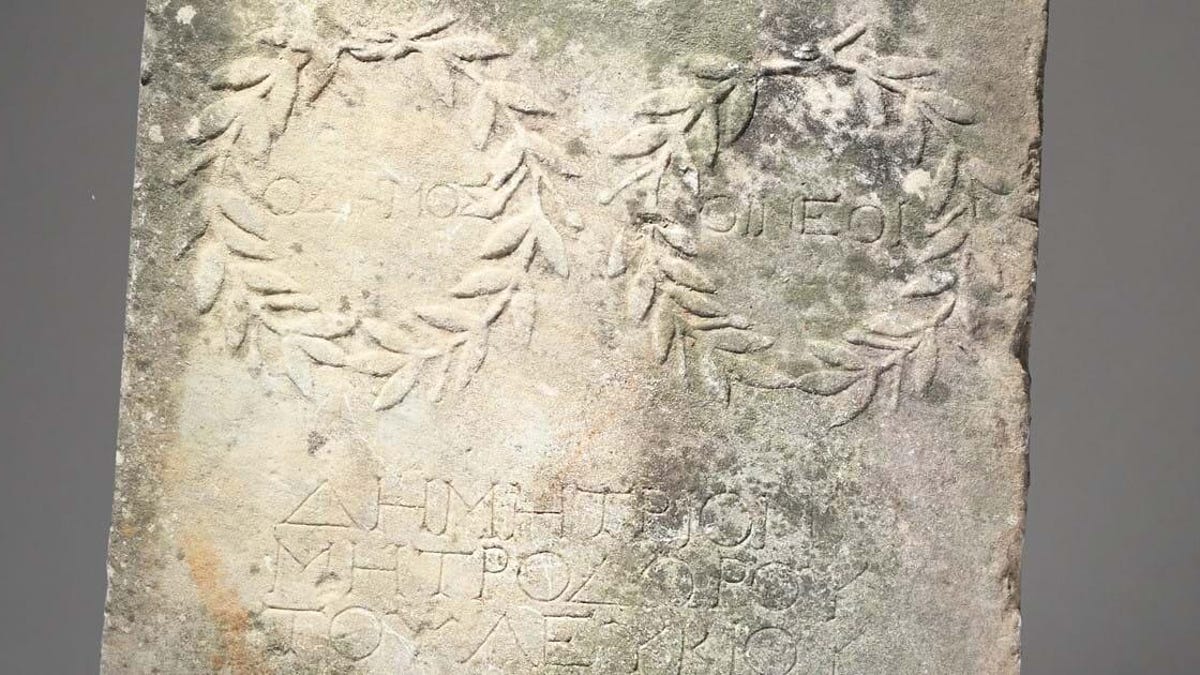Rock found in English garden turns out to be Roman relic worth $20,000
Centuries-old treasures can show up in the most unexpected places.

Not the typical horse mounting block.
A woman in England recently discovered she's been using an ancient Roman relic as a stepping stone to mount her horse.
The owner of a bungalow in southern England stumbled upon the marble slab in her rock garden 20 years ago. She used it in her stable for almost 10 years before layers of dirt and moss finally washed away enough to reveal laurel wreaths and an inscription carved into its surface, according to UK auction house Woolley and Wallis, which plans to auction off the slab this spring for a presale estimate of £10,000-£15,000 (roughly $13,600 or AU$17,555 to $20,400 or AU$26,332).
Upon realizing she hadn't been stepping on an ordinary garden rock, the equestrian, Woolley and Wallis says, consulted a local archaeologist who identified the marble slab as dating to the second century, with probable origins in Greece or Asia Minor, the peninsula that today constitutes the Asian portion of Turkey. It stands 25 inches (63 centimeters) tall, with an inscription in Greek that reads: "The people (and) the young men (honor) Demetrios (son) of Metrodoros (the son) of Leukios."
"Artifacts of this type often came into England as the result of Grand Tours in the late 18th and 19th century, when wealthy aristocrats would tour Europe learning about Classical art and culture," Wooley and Wallis antiquities specialist Will Hobbs said in a statement. "We assume that is how it entered the UK, but what is a complete mystery is how it ended up in a domestic garden, and that's where we'd like the public's help."
The bungalow where the valuable slab was found is located on Common Road in the village of Whiteparish -- about 100 miles west of London -- and was one of several built in the mid-1960s. The auction house hopes someone who lived in the area back then or helped build the dwelling might come forward with information that could shed light on the origins of the construction materials.
Hobbs notes that two notable homes close to Whiteparish were demolished in 1949 after having been requisitioned by the army during the war. Another nearby house was destroyed in a fire in 1963, and it's possible rubble from there was reused at building sites in the area shortly afterward.
The lesson? Next time you come across an unassuming rock in your garden, you might want to take a closer look.

